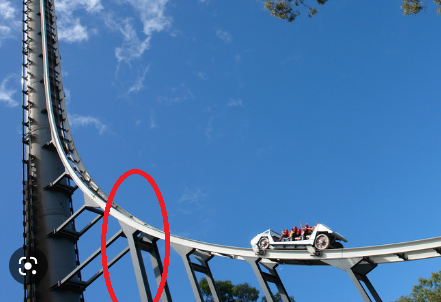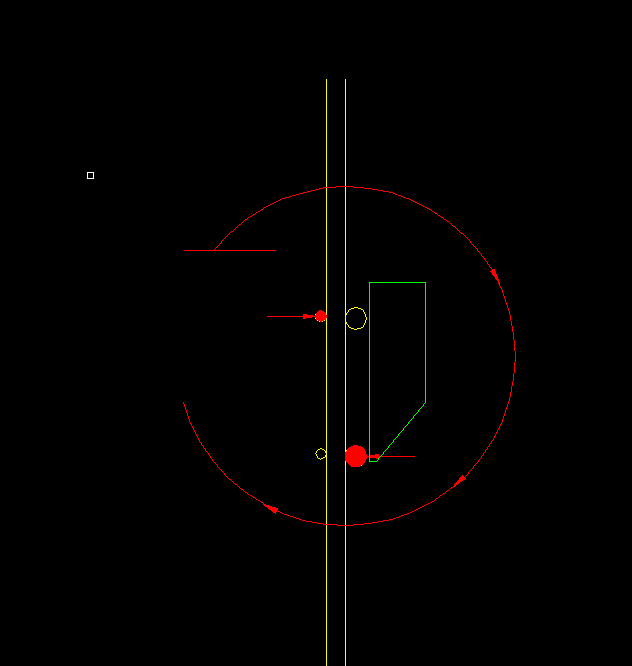-
Posts
10,914 -
Joined
-
Last visited
-
Days Won
239
Posts posted by Gazza
-
-
Quote
also there’s a fairground setup in Fairfield right now that’s doing unlimited rides for $35.. and $2 entry.
Do they have any Intamins?
-
Does AW need 2 coasters with "steeper than vertical drops" and small cars?
What about a more different type of ride?
-
 4
4
-
-
I'm so happy they used that font for "SLAYER".
-
It looks like it does have different colours though?


-
3 hours ago, Vidgamer said:
Not sure if this could go anywhere
Where else would it go?
Its a new attraction 😊
-
37 minutes ago, CR4ZE said:
I wouldn't call this disappointing. I think you can only blame yourselves for over-speculating about a fairly insignificant announcement. Did this need its own thread?
Yes, this is how we prefer people post.
It could have been something significant.
-
 2
2
-
-
Could it be the drop ride in their previous master plan and council submission?
-
Quote
Pretty sure its not vertical at that bit yet.
Which i why I said:
QuoteWhen the car heads up the incline to vertical, that is what gets the tower shaking. It goes from pushing down through the columns to ground to transferring against the horizontal ones that were braced against the tower as it curves up
So I maintain what i said earlier that when the car clears the curve and is running on the purely vertical part, the load on the track and tower is quite low, since the only real forces are the odds and sodds like crosswinds or unbalanced loading.
Its nowhere near 7.5 tonnes, or 6 tonnes, its probably lucky to be half a tonne.
-
Yeah I was clearly talking about the vertical section, not the directional change.

Clearly when the track curves and peels away from the tower you hit 4.5g, that's why there's a particularly chonky support
QuoteI know once the car is traveling down the tower it is placing the least amount of force onto the track
Backpedaling/ contradictory posts:
QuoteThe second the car stops on the track at the top and the car starts going down, it puts the full 6 tons onto the track.
-
Another way to consider it is the other vertical track on that tower... Giant drop.
Say the gondola weighs four tons.
On the way up what is supporting that four tons? The track or the winch?
What the gondola is released?
How much is the track supporting then?
Likely only a small amount sufficient to keep the gondola falling straight, enough to resist the wind Blowing it off course or uneven seat loading making the thing tip.
-
4 hours ago, New display name said:
Those things are not interchangeable because the coaster is trying to pull away from the track all the way down.
If what I was saying isn't true, why did the TOT car have up-stop wheels?
The second the car stops on the track at the top and the car starts going down, it puts the full 6 tons onto the track.
I'm not debating the forces doesn't change as it goes down because I already know this.
Can you go and cry somewhere else. I'm talking to adults here.
So yes I should clarify, there's probably a bit of force against the track, eg if the car is rear loaded it will want to tip forwards etc so, upstops are necessary.
But by definition it cannot be the "full 6 tonnes" as you claim.
Remember the 3rd law.
Parked in the station the car exerts 6 tonnes downwards.
The track exterts 6 tonnes upwards in return. If it didn't, the track would collapse and the car would land in the gift shop.
When the car heads up the incline to vertical, that is what gets the tower shaking. It goes from pushing down through the columns to ground to transferring against the horizontal ones that were braced against the tower as it curves up
Now the vertical part ...
The track is able to guide the car "a bit" but is mostly not supporting it.
The car would not be able free fall at the speed of gravity if the track was applying a significant force to prevent that.
The track that was preventing the car from falling through the station floor is now doing nothing to prevent it falling vertically.
That's why shallow drops like on roadrunner pick up speed slowly but vertical ones accelerate down at near the full 9.8ms²
Again, you're ignoring all these other examples where coasters with vertical track slim down the structure in those parts. How do they get away with it @New display name?
-
19 minutes ago, New display name said:
@GazzaI know at different points of the track different loads are applied. Load due to forces at the top of the track is close to zero but you still have the weight of the train to account for. TOT train weighed 6 tons, that is what weight is been applied to the top of the track.
But the weight of an object is just the force acting on the mass of an object due to an acceleration (g force) or gravity.
No gravity or force, no weight.
The mass is constant, the weight of the object isnt.
Think of this way. If the ride isn't running, there's no load on that bit of the track.
If youve got a car coasting down the vertical track, there's no meaningful way for that car to put load on the track, it's "falling past it", so its not really putting any major load either. It might as well not be there.
Imagine instead of a coaster it was a filing cabinet and a glass of water.
If you put it on top, the glass is putting full force on the top.
If it slips down the edge, its putting minimal force on the cabinet as it skids down the side.
Here's another example.
-
Quote
It's very forceful on the way down..
Only when it hits the curve.
QuoteAn object can only be weightless if there is no gravity. The feeling of weightlessness is different to the physics of weightlessness. TOT is very much loading up the track all the way to the top.
Only by a small amount.
And think about what you are saying.
When you are at rest your butt is putting your weight x 1g on the seat.
When you are on the curve you are putting your weight X 4.5g on the seat.
When you are on the the vertical you are putting almost no weight on the seat because you are floating out of it.
So therefore it follows.
-When the car is in the station its 10 tonnes on the track (or whatever)
-When it is on the curve to vertical it is putting 45 tonnes on the track.
-When it is coasting vertically, its putting almost nothing on the track.
A really good example of the physics of this in action is on an impulse coaster.
Notice how the curve to vertical has quite heavy tube supports and a cluster of track connectors.
This is the highest g load section of the ride, as it swoops under the trains are really pulling down on the track.
But when it gets to the vertical part, there are minimal extra supports. Why?
Because at this point the train is coasting up / falling parallel to the direction of the rails/
its not pushing down on the track, its "rolling with it", so the track is practically self supporting.
And then in the station its lightweight supports again because even though its going at high speed, its still only pulling down 1g
Another example would be on dive coasters. The track ties are further apart on the vertical part because the load is minimal, and then get close together again on curve at the bottom when the Gs hit.
Compare the distance between supports normally versus on the vertical part:
But yeah Slick is right, there would be a little bit of force on the car, eg wind blowing it sideways that would try to 'twist' the track, the car being unbalanced and wanting to shear a bit, but not a whole lot.
-
 1
1
-
-
Wouldnt the TOT car have put basically neglible loads on the track at that point, since the car is effectively weightless for the entire vertical section. Its not pushing down on the track.
Not saying that the tower would fall over, just that its more re-engineering.
FWIW having sail type letters would be less visible to southbound traffic IMO, since the tower itself is hiding them till the last minute.
Perforated steel I've got no issue with though. From a distance you cant tell.

-
Yeah in the wind I think the letters would be like a sail, and pull a bit on the old track connection points in a direction not originally designed for.
-
-
@DaptoFunlandGuy go to SW San Diego instead, they have that new dive coaster and a new jet ski coaster opening this year too.
-
Random question for flat ride thoosies, how do you tell the difference between a Zierer one versus a P&B one?
I mean with coasters you can tell the difference between a good and bad manufacturer because the good ones are smoother and have better shaped elements.
But is this the case for a simple spinning flat ride like this? What's the point of difference.
-
@DaptoFunlandGuy there are definitely better parks than Knotts anyway.
-
-
8 hours ago, REGIE said:
the oldest operating steal coaster in Australia (correct me if I am wrong)
Steel
-
 2
2
-
-
To me its no different to Universal Wonderland at USJ where you have Snoopy, Hello Kitty, Sesame St in the one zone.
-
 2
2
-
-
I thought the two adult flat rides were Batwing and Doomsday.
Then again I'm confused as to why kids coasters count to make the 9 but kids rides don't count.
-
I'm confused, how do you mean they didn't announce an opening date?
Wouldn't the opening date just be the day after the end of the maintenance period?
Eg with Serpent Slayer, the maintenance period ends 24th of March therefore opening date is the 25th of March.
Am I missing something here or am I some kind of genius?






















Wet n Wild SurfRider taken off website
in Theme Park Discussion
Posted
When surfrider was originally built it literally did go up in a matter of days, so it very well could pop up quite fast.